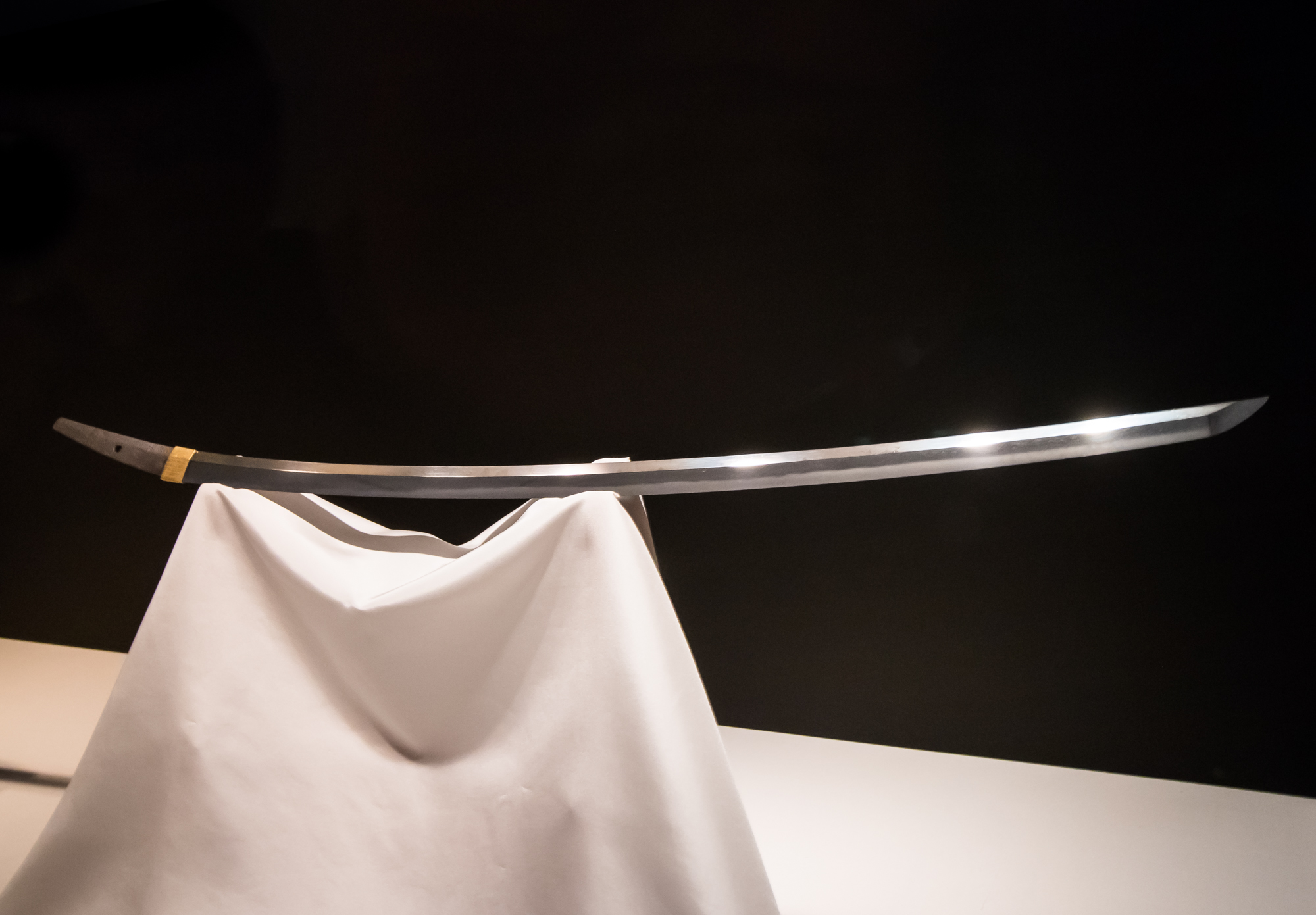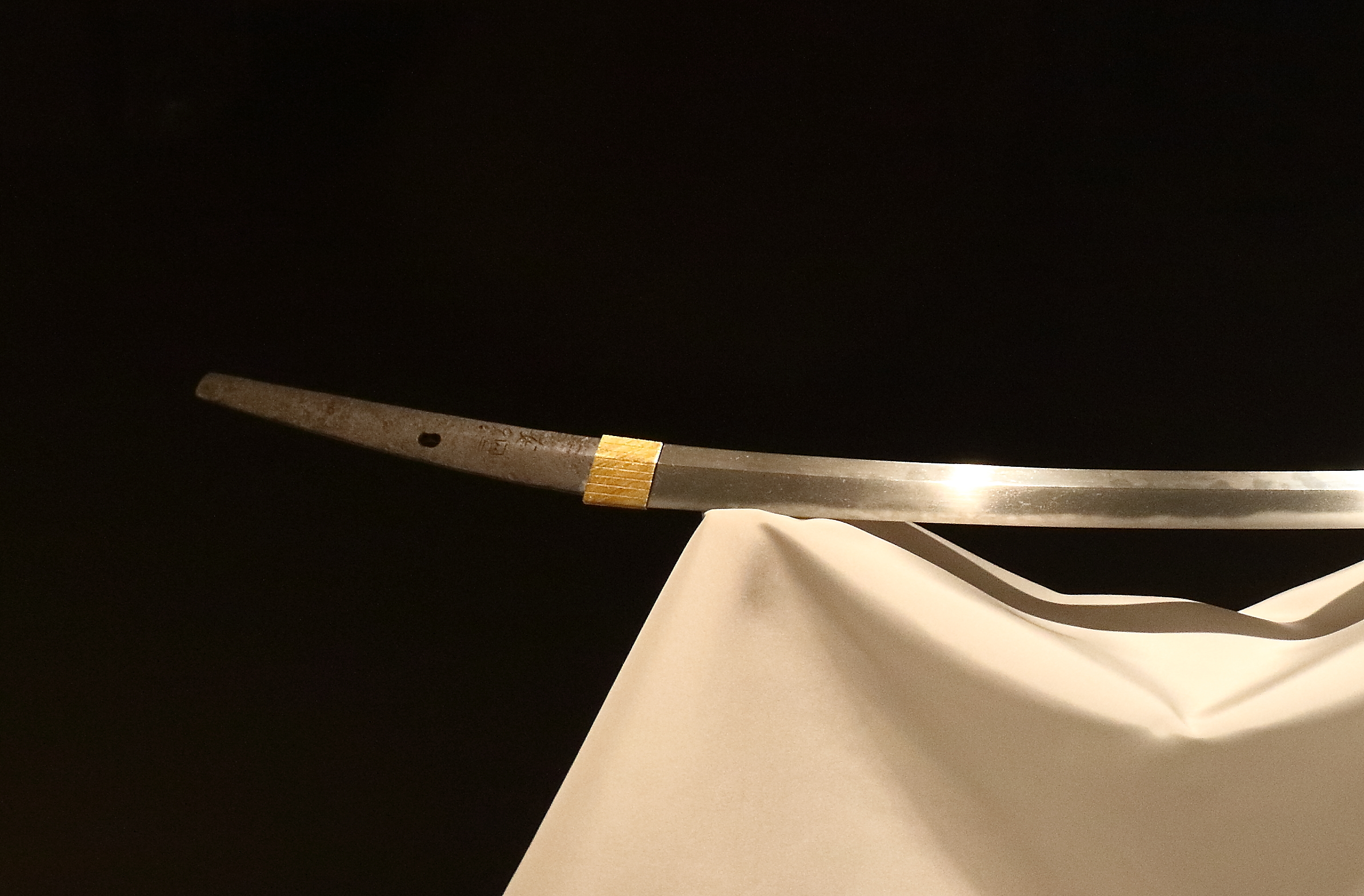Dōjigiri on:
[Wikipedia]
[Google]
[Amazon]
 Dōjigiri (童子切, "Slayer of Shuten-dōji") is a ''
Dōjigiri (童子切, "Slayer of Shuten-dōji") is a ''

 Dōjigiri (童子切, "Slayer of Shuten-dōji") is a ''
Dōjigiri (童子切, "Slayer of Shuten-dōji") is a ''tachi
A is a type of sabre-like traditionally made Japanese sword (''nihonto'') worn by the samurai class of feudal Japan. ''Tachi'' and '' uchigatana'' ("''katana''") generally differ in length, degree of curvature, and how they were worn when she ...
''-type Japanese sword
A is one of several types of traditionally made swords from Japan. Bronze swords were made as early as the Yayoi period (1,000 BC – 300 AD), though most people generally refer to the curved blades made from the Heian period (794–1185) to the ...
that has been identified as a National Treasure of Japan
Some of the National Treasures of Japan
A is " Tangible Cultural Properties designated by law in modern Japan as having extremely high value." Specifically, it refers to buildings, arts, and crafts designated as especially valuable from ...
. This sword is one of the "Five Swords Under Heaven" (天下五剣 Tenka-Goken).
Dōjigiri is sometimes called "the yokozuna
, or , is the top division of the six divisions of professional sumo. Its size is fixed at 42 wrestlers ('' rikishi''), ordered into five ranks according to their ability as defined by their performance in previous tournaments.
This is the o ...
of all Japanese swords" along with Ōkanehira ( :ja:大包平) because of its perfection; it is of great historical value as one of the oldest extant katana
A is a Japanese sword characterized by a curved, single-edged blade with a circular or squared guard and long grip to accommodate two hands. Developed later than the ''tachi'', it was used by samurai in feudal Japan and worn with the edge fa ...
-type weapons. The quality and the artistic value of the blade is exquisite, it has been kept in good preservation, and the legend tied to the sword is notable.
Anatomy
The present mounts of the Dojigiri are fine examples of Momoyama-period work in itomaki no tachi style, in which the typical wrapping of the hilt continues along part of the scabbard. The scabbard is decorated in gold nashiji (gold flakes suspended in transparent lacquer) and the metal fittings are of shakudo (a blue-black alloy of copper with a small percentage of gold) worked with a nanako (granulated) ground and bearing the imperial paulownia mon (family badge or crest) in gilt. It is perhaps the most celebrated of all Japanese swords.
History
Dōjigiri was presented toOda Nobunaga
was a Japanese ''daimyō'' and one of the leading figures of the Sengoku period, Sengoku and Azuchi-Momoyama periods. He was the and regarded as the first "Great Unifier" of Japan. He is sometimes referred as the "Demon Daimyō" and "Demo ...
, the leading late sixteenth century general (1534-82), by the Ashikaga family
The was a Japanese samurai clan and dynasty which established the Ashikaga shogunate and ruled Japan from roughly 1333 to 1573. The Ashikaga were descended from a branch of the Minamoto clan, deriving originally from the town of Ashikaga in S ...
. Subsequently it was the property, in turn, of Toyotomi Hideyoshi
, otherwise known as and , was a Japanese samurai and ''daimyō'' (feudal lord) of the late Sengoku period, Sengoku and Azuchi-Momoyama periods and regarded as the second "Great Unifier" of Japan.Richard Holmes, The World Atlas of Warfare: ...
and Tokugawa Ieyasu
Tokugawa Ieyasu (born Matsudaira Takechiyo; 31 January 1543 – 1 June 1616) was the founder and first ''shōgun'' of the Tokugawa shogunate of Japan, which ruled from 1603 until the Meiji Restoration in 1868. He was the third of the three "Gr ...
. The second Tokugawa shogun, Hidetada, bestowed it on the daimyo Matsudaira Tadanao
was a Japanese samurai lord from Sengoku to early Edo period, who was the 2nd ''daimyō'' of Fukui Domain in Echizen Province. Nussbaum, Louis-Frédéric. (2005)"Matsudaira Tadanao"in ''Japan Encyclopedia'', p. 617]
Biography
Tadanao was born ...
(1595-1650) of Echizen Province, Echizen. After the disgrace and dispossession of the Echizen Matsudaira occasioned by some irregular conduct on the part of Tadanao, the blade passed to the Tsuyama branch of the family.
Legends
The '' Kyōhō Era Handbook of Famous Works'' (Japanese: ''Kyōhō meibutsuchō'') records the legend that this sword was used by the great warrior Minamoto Yorimitsu to bring down the monstrous Shuten Dōji of Mt. Ōe in Tanba, thus earning the epithet of "Dōji-slaying Yasutsuna" (Japanese: ''Dōjigiri Yasutsuna''). The legend of the Shuten Dōji — either a demon or a highwayman — is thought to date to the Muromachi period (1392–1573).See also
*List of National Treasures of Japan (crafts-swords)
The term "National Treasures of Japan, National Treasure" has been used in Japan to denote Cultural Properties of Japan, cultural properties since 1897,
although the definition and the criteria have changed since the introduction of the term. T ...
* Japanese sword
A is one of several types of traditionally made swords from Japan. Bronze swords were made as early as the Yayoi period (1,000 BC – 300 AD), though most people generally refer to the curved blades made from the Heian period (794–1185) to the ...
References
{{reflist __FORCETOC__ National Treasures of Japan Individual Japanese swords